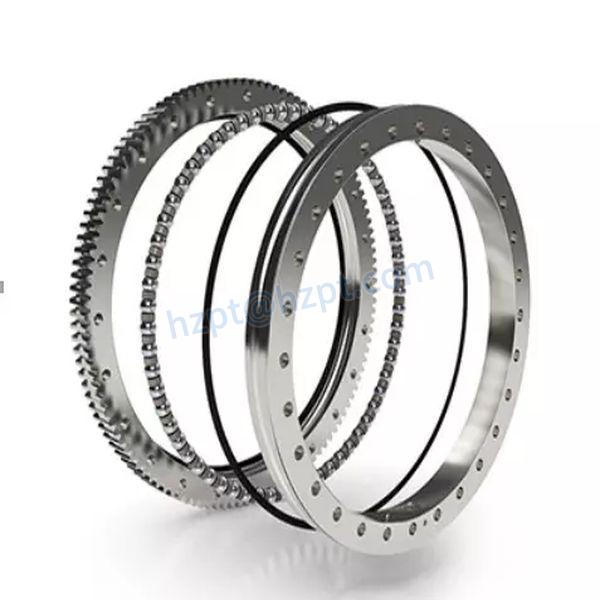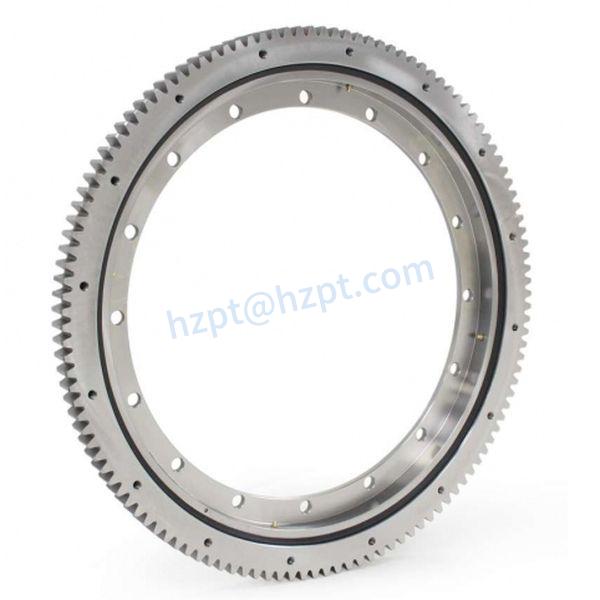Product Description
Product Description
|
Product series |
1. Single Row Four Point Contact Ball Slewing Bearings. |
|
Outside Diameter |
300 – 5000 mm |
|
Gear Options |
External gear |
|
Brand Name |
FH |
|
Raw material |
50Mn, 42CrMo |
|
Certificate |
ISO9001:2008, SGS |
|
Payment Terms |
L/C,T/T,Western Union |
|
OEM/ODM |
Available |
|
Packaging Details |
1:Filling with rust-proof oil |
/* January 22, 2571 19:08:37 */!function(){function s(e,r){var a,o={};try{e&&e.split(“,”).forEach(function(e,t){e&&(a=e.match(/(.*?):(.*)$/))&&1
| Standard or Nonstandard: | Standard |
|---|---|
| Feature: | High Speed, Vacuum, Antimagnetic, Cold-Resistant, Corrosion-Resistant, Heat-Resistant |
| Sealing Gland: | Sealed On One Side |
| Samples: |
US$ 1/Piece
1 Piece(Min.Order) | Order Sample Free samples
|
|---|
| Customization: |
Available
| Customized Request |
|---|
.shipping-cost-tm .tm-status-off{background: none;padding:0;color: #1470cc}
|
Shipping Cost:
Estimated freight per unit. |
about shipping cost and estimated delivery time. |
|---|
| Payment Method: |
|
|---|---|
|
Initial Payment Full Payment |
| Currency: | US$ |
|---|
| Return&refunds: | You can apply for a refund up to 30 days after receipt of the products. |
|---|

Are there any Specific Design Considerations when Using Slewing Bearings in Heavy-Duty Applications?
When utilizing slewing bearings in heavy-duty applications, several specific design considerations are essential to ensure reliable performance, safety, and longevity. Here are key factors to keep in mind:
- Bearing Selection:
Choose slewing bearings with higher load-carrying capacities that are specifically designed for heavy loads. Opt for designs that distribute loads evenly and minimize stress concentrations.
- Load Distribution:
Heavy-duty applications often involve uneven load distribution due to various operational conditions. Bearing designs should account for these variations to prevent premature wear and failure.
- Material Selection:
Select materials that can withstand heavy loads, shock loads, and potential impacts without deformation or fatigue. High-strength steels and advanced materials with excellent mechanical properties are often preferred.
- Rolling Element Size and Quantity:
Increase the size and quantity of rolling elements to distribute heavy loads more effectively. Larger and more rolling elements can handle higher forces while reducing stress on individual elements.
- Lubrication and Sealing:
Heavy-duty applications generate more heat and friction. Use appropriate lubrication methods and consider advanced sealing solutions to ensure proper lubricant retention and prevent contamination.
- Mounting and Alignment:
Ensure accurate mounting and alignment to prevent unnecessary stress on the bearing components. Misalignment can lead to premature wear and reduced bearing life.
- Structural Integration:
Integrate the slewing bearing into the overall machine design, considering factors like structural support, load paths, and interfaces with other components.
- Dynamic Loading:
Heavy-duty applications often involve dynamic loading scenarios. Consider factors such as impact loads, acceleration, and deceleration when designing the bearing and its supports.
- Heat Dissipation:
Heavy loads and continuous operation can generate heat. Design the bearing housing and cooling systems to dissipate heat effectively and prevent overheating.
- Maintenance Access:
Design the bearing arrangement to allow for convenient maintenance and inspections. Access to lubrication points, seals, and other components should be easy to facilitate regular upkeep.
- Load Surges and Shock Absorption:
Heavy-duty applications might experience sudden load surges or impacts. Incorporate shock-absorbing mechanisms or dampers to protect the bearing from excessive forces.
In summary, heavy-duty applications demand careful consideration of bearing selection, materials, load distribution, lubrication, and other design elements to ensure the reliable and durable performance of slewing bearings under substantial loads.

How does Preload Affect the Performance and Stability of Slewing Bearings?
Preload is a critical factor that can significantly impact the performance and stability of slewing bearings. It involves applying a controlled axial force to the bearing components before assembly. Here’s how preload affects slewing bearings:
- Reduced Internal Clearance:
Applying preload reduces the internal clearance between the rolling elements and raceways. This minimizes play or clearance in the bearing, enhancing its rigidity and reducing the potential for rolling element skidding during operation.
- Improved Stiffness:
Preloaded slewing bearings exhibit higher stiffness due to the elimination of internal clearance. This improved stiffness is crucial in applications requiring precise positioning, such as robotics and high-precision machinery.
- Enhanced Load Distribution:
Preload improves the load distribution among rolling elements, minimizing stress concentrations and promoting uniform load sharing. This is especially important in applications with varying loads and forces.
- Reduced Vibrations:
By eliminating internal clearance and minimizing rolling element movements, preloaded bearings experience reduced vibrations during operation. This contributes to smoother and more stable equipment performance.
- Precise Positioning:
Preload ensures minimal movement within the bearing during rotational changes, making it suitable for applications where precise positioning and accurate motion control are essential.
- Resistance to External Loads:
Preloaded bearings are better equipped to handle external forces and shocks without significant deformation or misalignment, maintaining consistent performance even under varying conditions.
- Reduced Wear:
With reduced internal clearance and controlled movement, preloaded bearings experience less wear and fatigue. This extends their service life and reduces the frequency of maintenance.
- Limitations:
However, excessive preload can lead to increased friction, heat generation, and potential damage. It’s essential to apply the right amount of preload according to manufacturer recommendations and application requirements.
In summary, preload in slewing bearings enhances rigidity, load distribution, and stability, making them suitable for applications that demand precise movement and control. Properly applied preload ensures optimal performance and extends the operational life of the bearing.

What is a Slewing Bearing and How Does It Work?
A slewing bearing, also known as a turntable bearing, is a specialized type of rolling-element bearing designed to handle axial, radial, and moment loads simultaneously. It allows rotational movement between two parts while supporting the loads applied to them. Slewing bearings are commonly used in various applications such as cranes, construction equipment, wind turbines, and industrial machinery.
At its core, a slewing bearing consists of multiple components, including an outer ring, an inner ring, rolling elements (balls or rollers), and in some designs, a gear or teeth arrangement. The outer ring is typically stationary and mounted to a fixed structure, while the inner ring is connected to the rotating part. The rolling elements provide smooth movement between the two rings, enabling rotation.
Slewing bearings work by minimizing friction and distributing loads effectively across the rolling elements. When a rotational force is applied to the inner ring, the rolling elements facilitate the smooth rotation of the inner ring relative to the outer ring. The rolling elements are positioned within raceways or grooves in the rings, ensuring proper contact and load distribution.
The addition of gears or teeth to the slewing bearing design enables the transmission of torque between the inner and outer rings. This feature is particularly useful when precise rotation control is required, as seen in applications like cranes and heavy machinery.
In summary, a slewing bearing functions as a rotational joint that can support various loads and movements. Its design, which includes rolling elements and optional gear systems, allows it to manage axial, radial, and moment loads while facilitating smooth rotation between connected parts.


editor by CX 2024-05-09
Leave a Reply